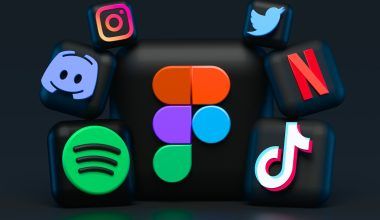Have you ever been in a situation where you’re humming along to a song, and suddenly, the next line escapes you? Or maybe you’re designing an app or program that needs to display lyrics line by line. Whatever the case, learning how to show the next line of a song in text can be incredibly helpful. This guide will break down the process step-by-step in a way that’s easy to understand and implement.
Why Is This Important?
Understanding how to display the next line of a song can be useful for various purposes. It’s a crucial feature in karaoke machines, music learning tools, or even mobile apps designed to engage users with song lyrics. By mastering this skill, you can create smoother user experiences and bring your creative ideas to life. Now, let’s dive into the details.
Basics of Text Display
To show the next line of a song in text, you first need to grasp some fundamental concepts. At its core, this involves taking a set of lyrics and displaying them sequentially. Sounds simple, right? Let’s start by exploring the components:
- Lyrics Data: You need the song’s lyrics stored in a structured format like a text file, database, or even hardcoded into your program.
- Display Mechanism: This could be a screen, app interface, or webpage where the lyrics will appear.
- Control Logic: A method to determine when and how the next line is shown.
Now that we’ve identified the building blocks, let’s move on to how you can set this up.
Step 1: Collect the Lyrics
The first thing you need is a clear and complete copy of the song’s lyrics. Make sure each line is separated clearly. For instance, you can store the lyrics in a text file like this:
Line 1 of the song
Line 2 of the song
Line 3 of the songYou can also use a more advanced format, like JSON or XML, if you’re building an app. For example:
{
"lyrics": [
"Line 1 of the song",
"Line 2 of the song",
"Line 3 of the song"
]
}Step 2: Design the Display
Think about where and how you want the lyrics to appear. If it’s a webpage, you can use simple HTML and CSS to style the display. Here’s an example of how to set up a lyrics container:
<div id="lyrics-container">
<p id="current-line"></p>
</div>For mobile apps, use a text view or label widget to show the lyrics. Make sure the display is easy to read and visually appealing.
Step 3: Implement Logic for the Next Line
Now comes the fun part — programming the logic. Whether you’re using JavaScript, Python, or another language, the process remains similar. Here’s a simple JavaScript example:
let lyrics = [
"Line 1 of the song",
"Line 2 of the song",
"Line 3 of the song"
];
let currentIndex = 0;
function showNextLine() {
if (currentIndex < lyrics.length) {
document.getElementById('current-line').textContent = lyrics[currentIndex];
currentIndex++;
} else {
console.log("End of song");
}
}
// Trigger the function (e.g., with a button click)This script updates the text on the screen whenever the showNextLine function is called. You can link it to a button, a timer, or any event you want.
Step 4: Add Transitions and Effects
To make the experience more engaging, consider adding transitions or effects. For example, you could fade in each new line of the song. Here’s how you might do it with CSS:
#current-line {
opacity: 0;
transition: opacity 1s;
}
.show {
opacity: 1;
}Then, modify the JavaScript to apply the show class:
function showNextLine() {
if (currentIndex < lyrics.length) {
let lineElement = document.getElementById('current-line');
lineElement.textContent = lyrics[currentIndex];
lineElement.classList.add('show');
currentIndex++;
setTimeout(() => {
lineElement.classList.remove('show');
}, 1000);
} else {
console.log("End of song");
}
}Advanced Techniques
If you’re feeling ambitious, you can go beyond the basics:
- Synchronize with Music: Use timestamps to sync lyrics with the audio playback. For this, you’ll need to store each line’s timing data and use a timer to display the corresponding line at the right moment.
- User Interactivity: Allow users to scroll through lyrics manually or replay specific lines. Add buttons for “Previous Line” and “Next Line” functionality.
- Dynamic Loading: For longer songs, load lyrics dynamically to save memory and improve performance.
Common Challenges and Solutions
- Handling Long Lines: Break long lines into smaller chunks so they fit on the screen without scrolling.
- Syncing Issues: Test your timing data thoroughly to ensure the lyrics align perfectly with the music.
- Multilingual Support: If the song has translations, provide options for users to switch between languages seamlessly.
Final Thoughts
By now, you should have a clear understanding of how to show the next line of a song in text. Whether you’re building a karaoke app, a music education tool, or just satisfying your curiosity, these steps will guide you to success. Keep experimenting, and don’t be afraid to add your creative touch. Music and technology go hand in hand, and with the right approach, you can create something truly special.
Related Articles:
For further reading, explore these related articles:
For additional resources on music marketing and distribution, visit DMT RECORDS PRIVATE LIMITED






